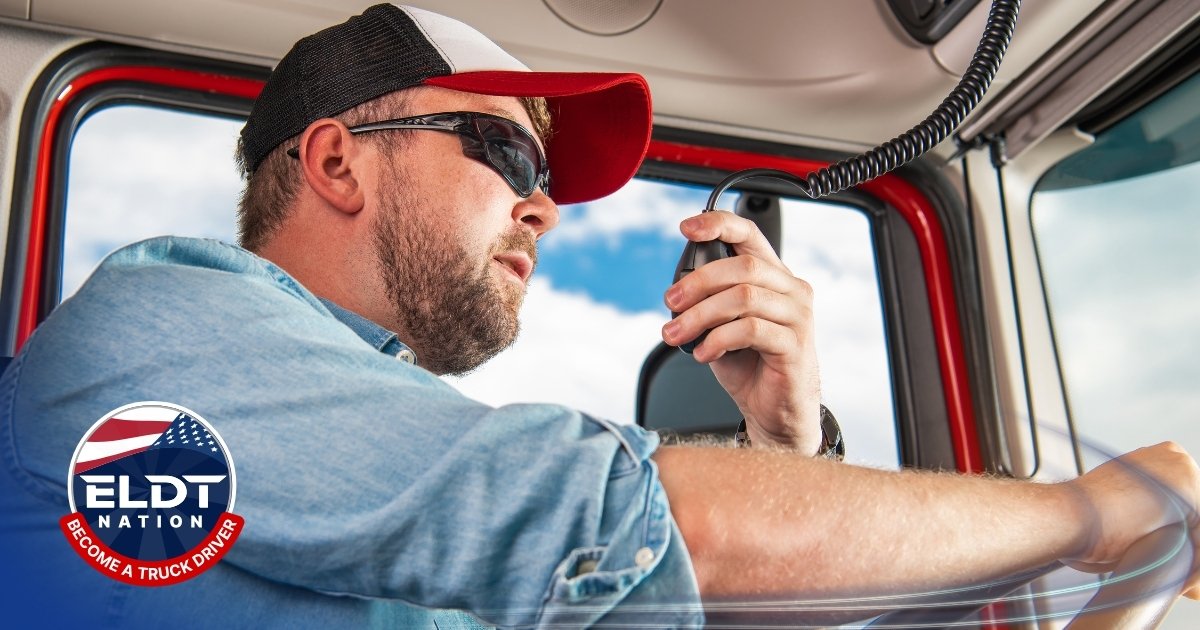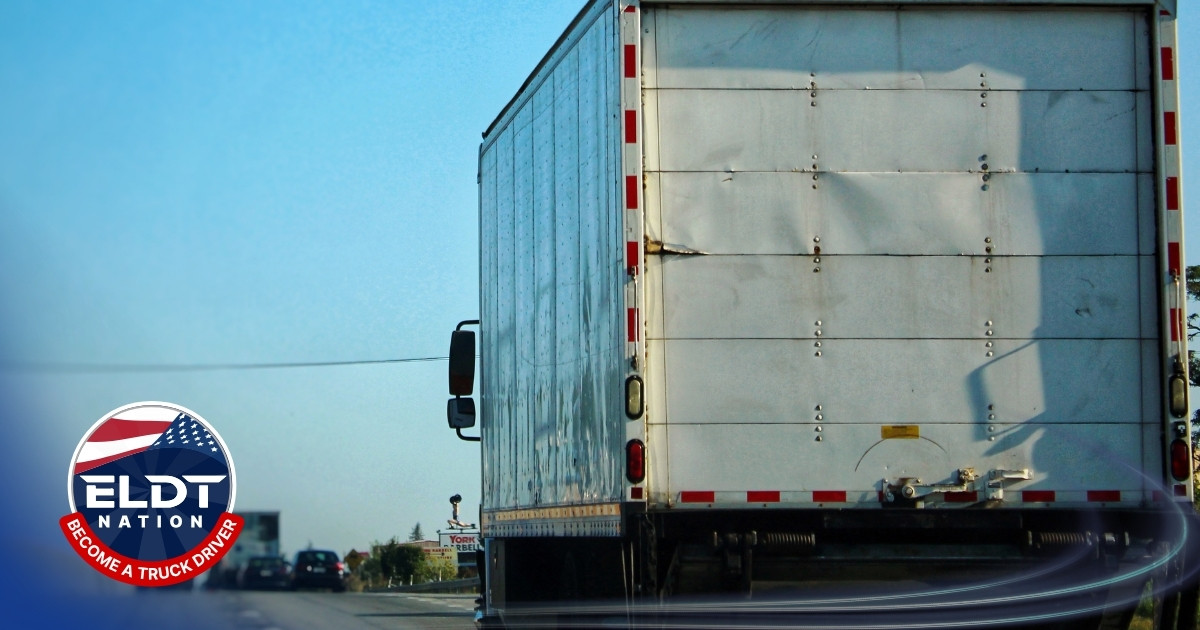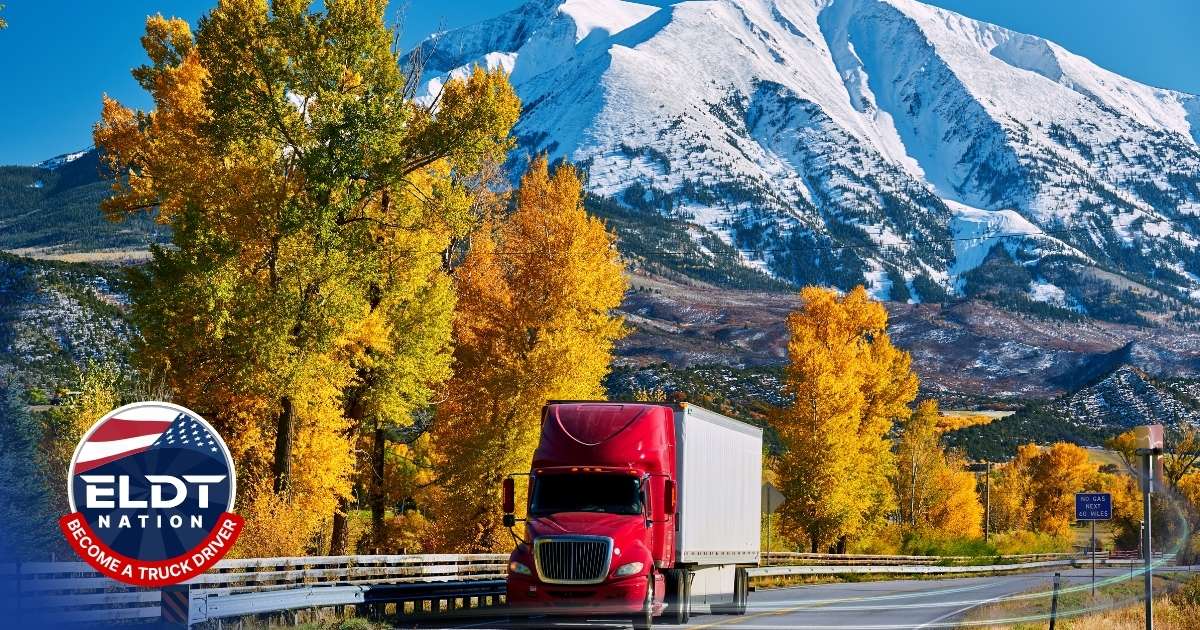ELDT Requirements for New Truck Drivers
So you want to be a trucker and keep hearing about ELDT requirements. What are they? Simply put, ELDT stands for Entry-Level Driver Training. It's a set of rules from the government that every new commercial driver has to follow before they can hit the road.
Breaking Down The ELDT Requirements
Think of ELDT as the official rulebook for getting your CDL. Before these rules, CDL training was all over the place. What you learned in one state could be totally different from another. The Federal Motor Carrier Safety Administration (FMCSA) made one set of rules for everyone to make sure all new drivers are safe and skilled.
The goal is to make you a safe and confident driver from day one. It’s not just about passing a test. It's about building a solid start for your career. These rules make sure you understand your truck, the rules of the road, and the big responsibility of being a professional driver.
Why Were These Rules Created?
Plain and simple: to make our roads safer. You'll be driving a rig that weighs thousands of pounds. Good training isn't just a good idea—it's a must. The numbers prove it. In one recent year, the National Safety Council reported 5,837 deadly accidents involving large trucks. That's a serious reminder of why good, standard training is so important.
The ELDT rule creates a national standard for new drivers. It makes sure everyone gets the same solid safety training before getting their CDL.
This new standard means you'll learn the same core topics no matter where you train. It doesn't matter if you're in Florida, California, or learning online. This helps reduce accidents and makes the roads safer for all of us.
What Does This Mean For You?
If you're a new driver, the ELDT requirements give you a clear path to your CDL. There’s no more guessing. You know exactly what you need to learn. And you know the training you pay for is legit and follows federal law.
The training has two main parts:
- Theory (Classroom) Training: This is the book smarts part. You’ll learn important topics like truck systems, hours-of-service rules, and safe driving skills. The good news is you can usually do this part online, on your own time.
- Behind-the-Wheel (BTW) Training: This is where you get in a real truck. You’ll use what you learned in the theory part. A certified instructor will guide you on a practice range and then on public roads.
After you finish both parts with an approved school, they report it to the FMCSA. This tells your state DMV you're ready to take your final skills test. This guide will walk you through the ELDT requirements without the confusing government talk. You can focus on what matters: starting your new career.
Alright, you know what ELDT is. But you're probably asking, “Do I need to do this?” Let’s get you a clear answer.
These rules don't apply to every single person getting a CDL. But they do cover almost all new drivers starting out today. It's the new standard for anyone starting a pro driving career.
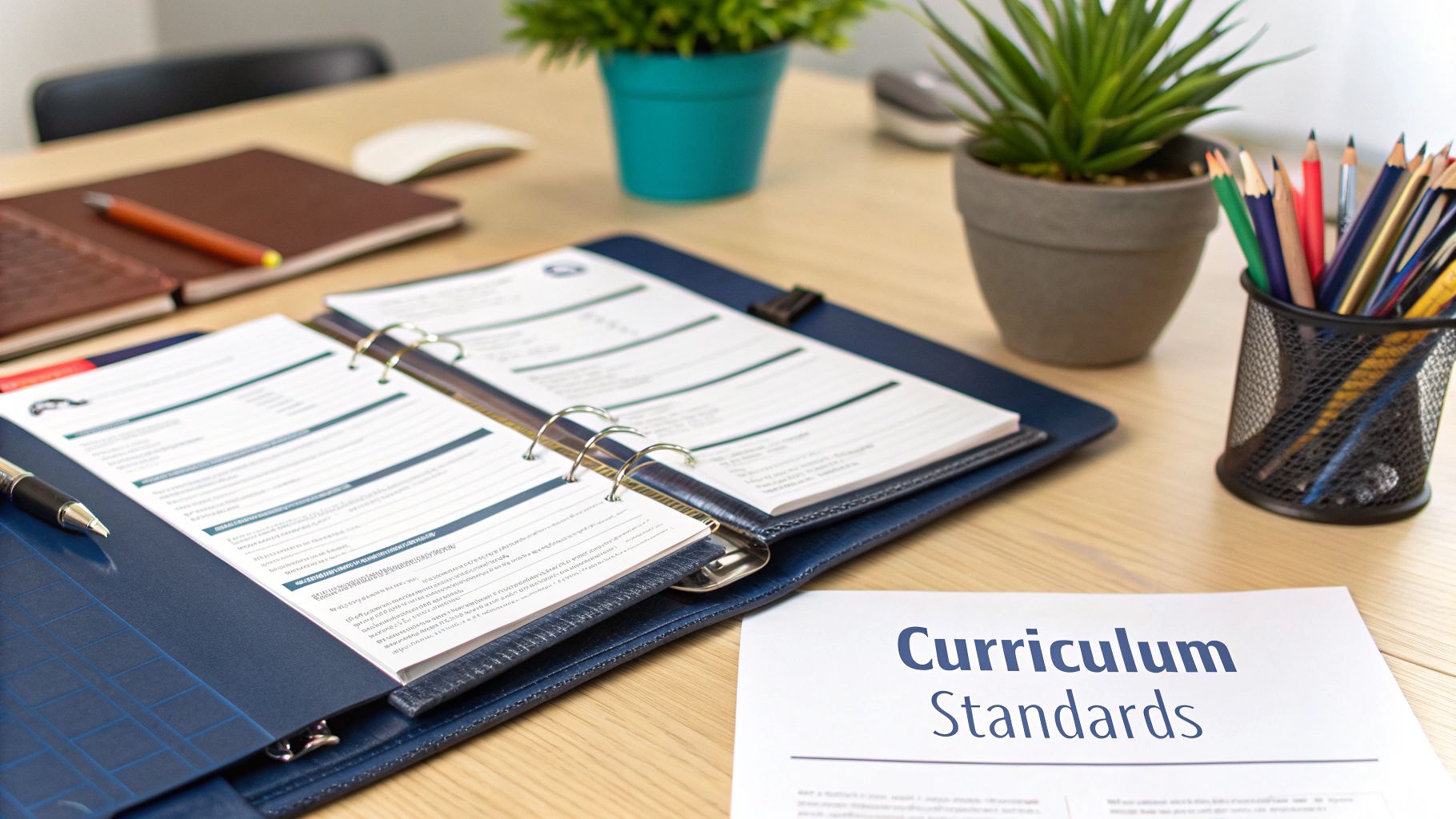
Who Is Required to Complete ELDT?
This is the most important part to know. You must complete Entry-Level Driver Training if you're:
- Getting a Class A or Class B CDL for the very first time.
- Upgrading from a Class B CDL to a Class A CDL.
- Adding certain endorsements to your license for the first time.
Endorsements are for special types of driving that need extra safety training. You’ll need to complete ELDT if you want to add any of these to your CDL:
- School Bus (S) Endorsement: For driving a school bus.
- Passenger (P) Endorsement: For driving vehicles with 16 or more people, like a tour bus.
- Hazardous Materials (H) Endorsement: For hauling hazmat loads.
The key date to remember is February 7, 2022. If you're getting your first CDL or one of these endorsements after this date, the ELDT rules apply to you. No way around it.
To make it even easier, here's a quick checklist.
A Quick Checklist to See if ELDT Applies to You
Use this table to check if you need to follow the federal ELDT requirements.
Hopefully, that makes sense! Now, let's talk about who gets a pass.
Who Is Exempt From ELDT?
So, who doesn't have to worry about this? The FMCSA made it clear these rules are for new drivers. They are not for experienced pros who already had their license.
You are NOT required to complete ELDT if you:
- Had a valid Class A or Class B CDL before February 7, 2022.
- Got a School Bus (S), Passenger (P), or Hazardous Materials (H) endorsement before February 7, 2022.
Basically, if you were already a licensed commercial driver before the rules started, you’re grandfathered in. The government isn’t making experienced truckers go back to school. These ELDT requirements are just for the new drivers joining the industry.
If you are in one of the "must complete" groups, your next step is easy. Find a training provider on the official FMCSA list. This makes sure your training is valid and gets you on the road legally. A trusted provider like ELDT Nation can get you certified quickly and affordably.
The Two Parts of ELDT Training
The federal ELDT requirements are split into two main parts. Think of it like learning a new sport. First, you study the rulebook. Then you get on the field to play the game.
To get your CDL, you have to do both. One part is about learning the information. The other part is about using that information in a real truck. Let’s look at each part.
Part 1: The Theory Training
First up is the theory training. This is your classroom part. You'll build the knowledge every pro driver needs. The best part? You can often do this whole section online, from home, on your own schedule.
This isn't just about memorizing facts for a test. The goal is to really understand why the rules of the road exist. You’ll cover a lot of topics that are key to keeping you and everyone else safe.
Key topics you'll learn include:
- Basic Operation: Getting to know every switch, gauge, and control in your truck.
- Safe Operating Procedures: Learning how to manage your speed and space. You'll also learn how to handle tough situations like steep hills or bad weather.
- Vehicle Systems: Understanding things like your air brakes and electrical systems. This knowledge will be your best friend during pre-trip inspections.
- Hours of Service (HOS): Learning the rules about your driving time. Following these rules is a must for safety.
- Non-Driving Activities: Covering other job duties, from handling cargo paperwork to what to do after a crash.
To move on, you have to score at least an 80% on the final theory test. This proves you know the important information before you even get in the truck.
Part 2: The Behind-the-Wheel Training
Once you pass the theory test, it's time for the hands-on part: behind-the-wheel (BTW) training. This is where you use everything you learned in a real truck. A certified instructor will be right there to help you.
BTW training is split into two areas to make sure you’re ready for anything on the road.
1. Range Training - You’ll start on a closed driving range, away from traffic. It's a safe place to learn the basics without the stress of other cars. Here, you’ll master key skills like:
- Pre-trip vehicle inspections
- Backing and docking
- Coupling and uncoupling a trailer
- Parallel parking (both types)
2. Public Road Training - After you show your skills on the range, you'll take the truck out on public roads. Your instructor will have you drive in real-world situations. This includes highways, city streets, intersections, and railroad crossings. This is where you show you can drive the truck safely and confidently in traffic.
So, how many hours does this take? The FMCSA doesn't set a minimum number of hours for BTW training. It’s all about how well you can do it. Your instructor has to confirm that you are skilled in all the required moves. It’s about being ready, not about the clock.
To get a better idea of what a full program covers, check out our guide on ELDT courses online.
How to Find an Approved ELDT Provider
Okay, so you get what ELDT is all about. The next big step is finding the right place for your training. This is not a choice to make lightly. You can't just pick any truck driving school and hope it counts for your ELDT requirements.
The Federal Motor Carrier Safety Administration (FMCSA) has an official "approved" list. It's called the Training Provider Registry, or TPR for short.
Think of the TPR as the government's stamp of approval. If a school isn't on that list, their training is useless to the DMV. You won't be allowed to take your CDL skills test. It’s that simple.
Using the Training Provider Registry
The good news is that the FMCSA makes it easy to check. They have a website where you can search for schools. You can look for schools that offer Class A, Class B, or endorsement training. It's the only place to get the true list.
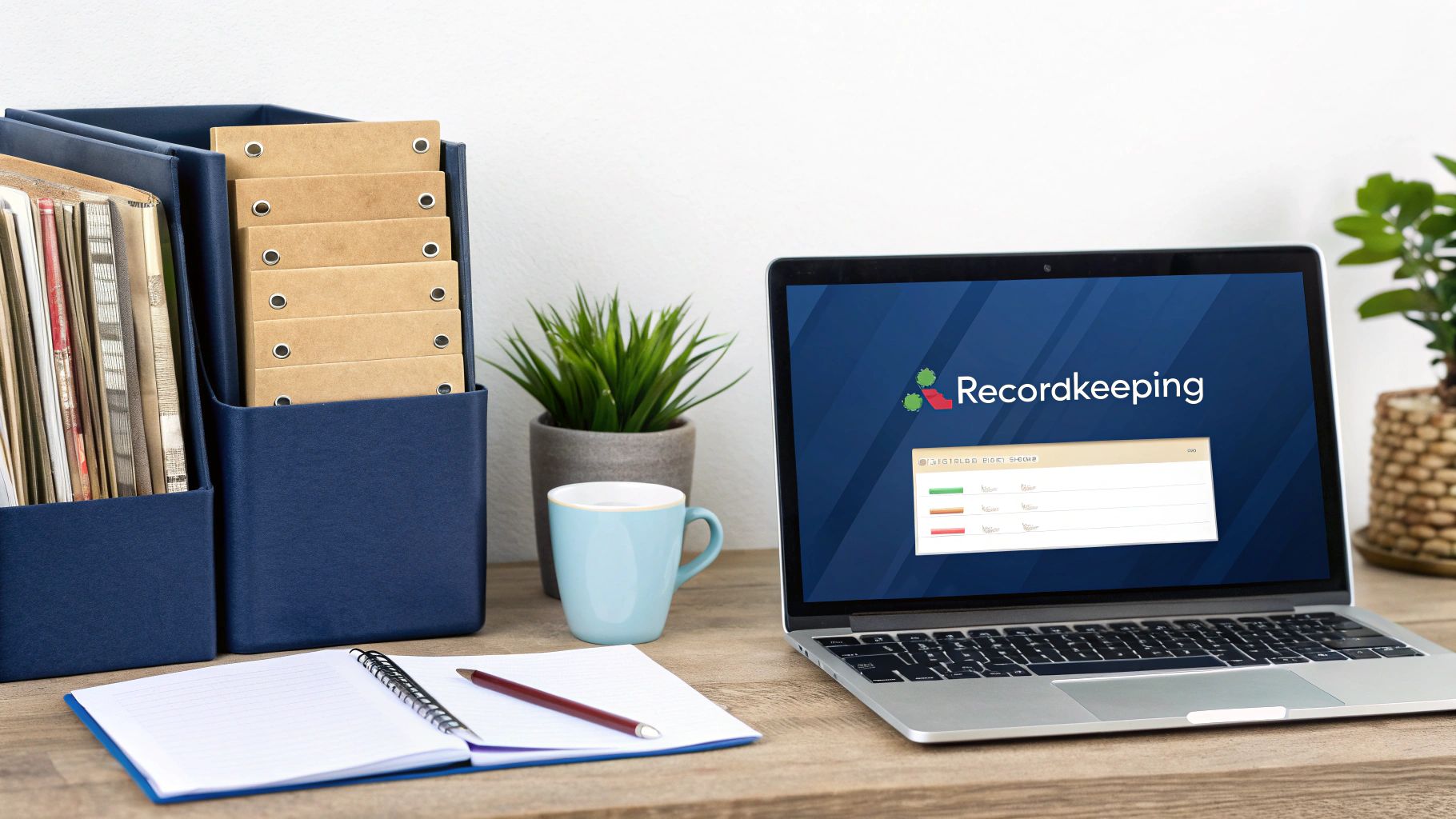
As you can see, you can look up a provider by its name or where it's located. This tool is your best friend. It helps you make sure a school is legit before you give them any money.
You can even filter for schools that only offer the online theory part, only the driving part, or both. This gives you a lot of options. For example, many drivers now do their theory training online. Then they find a local school for the hands-on driving.
What to Look For in a Provider
Just because a school is on the TPR doesn't mean it's the best for you. Being listed just means they meet the basic federal rules. You’ll want to look deeper to find a good program that will really prepare you for the road.
Here are a few things to check:
- Instructor Experience: Are the instructors experienced truckers who know their stuff and can teach well?
- Equipment Quality: What kind of trucks will you learn on? You want clean, good-running trucks that are like what you’ll find in a real job.
- Student Reviews: See what other students are saying. A quick search on Google or trucking forums will tell you what their experience was really like.
- Training Structure: Ask to see what you'll be learning. A good school will be happy to show you their curriculum and how they'll get you ready for the CDL test.
The Dangers of Unlisted Schools
It's worth saying one more time: if a school is not on the TPR, your training will not count. You will have wasted your time and money. You'll have to start over with an approved school. There are no exceptions.
Be careful of schools that promise super cheap or super fast training. Those are big red flags. Always, always check a school's status on the official TPR website before you sign up. Your career depends on it.
If you want to know what a great program looks like, our article on the best online ELDT courses breaks it down for you.
What Happens After You Finish Training
Congrats! You’ve done the work, passed your theory and driving training, and are almost there. So what’s left between you and the open road?
Honestly, the hardest part is over. Once your instructor gives you the final thumbs-up, your part is done. Your approved training school takes it from here. They handle all the official reporting online.
Your Training Record Goes Digital
Forget about paper certificates. The old way of proving you finished training is gone, thanks to the ELDT mandate. The whole system is now digital. This helps stop cheating and keeps things moving smoothly for everyone.
Here’s a quick look at what happens next:
- Your School Submits Your Record: As soon as you pass, your school sends your completion record online to the FMCSA’s official database, the Training Provider Registry (TPR).
- The DMV Checks the Registry: When you go to your local DMV for your CDL skills test, they will look you up in the TPR.
- You Get the Green Light: If your name is in the system, it’s official. They can see you’ve met the federal training rules and can take your skills test.
This digital system makes sure every new driver has completed the right training from a real school. It’s all about checking and safety. For a full breakdown of the whole licensing process, check out our complete guide on how to get a CDL.
One Crucial Tip Before You Head to the DMV
Listen up, because this is important. Don’t go to the DMV the same day you finish your training.
Even though the reporting is electronic, it’s not always instant. It can take a little time for your school’s report to show up in the federal system.
Give it at least 24 to 48 hours after your school says they’ve submitted your results. A little patience here will save you a big headache and a wasted trip.
Think about it. You don’t want to drive all the way there, wait in line, and get turned away because the system hasn’t updated yet. Waiting a day or two gives the computers time to catch up, so you can get on with your test.
Ready to start your journey? At ELDT Nation, we provide FMCSA-approved online theory courses that get you certified quickly and affordably. Get started today and take the first step toward your new career.

